Few countries offer the sheer diversity of South Africa. Plot your way around wildlife-packed savannah, windswept peaks, breathtaking coast and hip cities with our handy guide...
Some bias should be admitted first. I grew up, and live, in South Africa. I also wrote the first international guidebook to the country in the aftermath of Nelson Mandela's release, and I've since dedicated something like three years to exploring its highways and backroads. Yet, far from harbouring a been-there-done-that feeling about South Africa, it remains my favourite travel destination.
Primarily, this is due to the breadth and depth of its natural attractions. When it comes to biodiversity, ecologists have ranked South Africa among the world's three most significant countries. And you don't need to be a scientist to be inspired by a country that goes from the wildlife-rich savannah of Kruger National Park and the heather-draped headlands of the Cape Peninsula to the austere desertscapes of Kgalagadi and the windswept peaks of the uKhahlamba-Drakensberg... not to mention the cosmopolitan urban buzz of its two world cities, Cape Town and Johannesburg.
No less important is the fact that South Africa is also unusually well suited to affordable independent travel. There's no shortage of sensibly priced accommodation, restaurants and other tourist amenities, making it exceptional value by international standards. Better still, the world-class road network and ease of car rental makes South Africa far better suited to self-drive exploration than pretty much anywhere else in Africa or Asia.
Perhaps the most daunting aspect of planning a trip to South Africa is where to start. It isn't one of those countries where its highlights can be crammed into two weeks, or even a month. On the contrary, you could easily dedicate a fortnight to Cape Town and its coast and winelands, or to exploring Kruger National Park and the environs from south to north, or to the vast desertscapes of the Northern Cape - each a varied, unique destination in its own right. Here's a selection of the best itineraries to help explore its diversity...
Gauteng & the north-west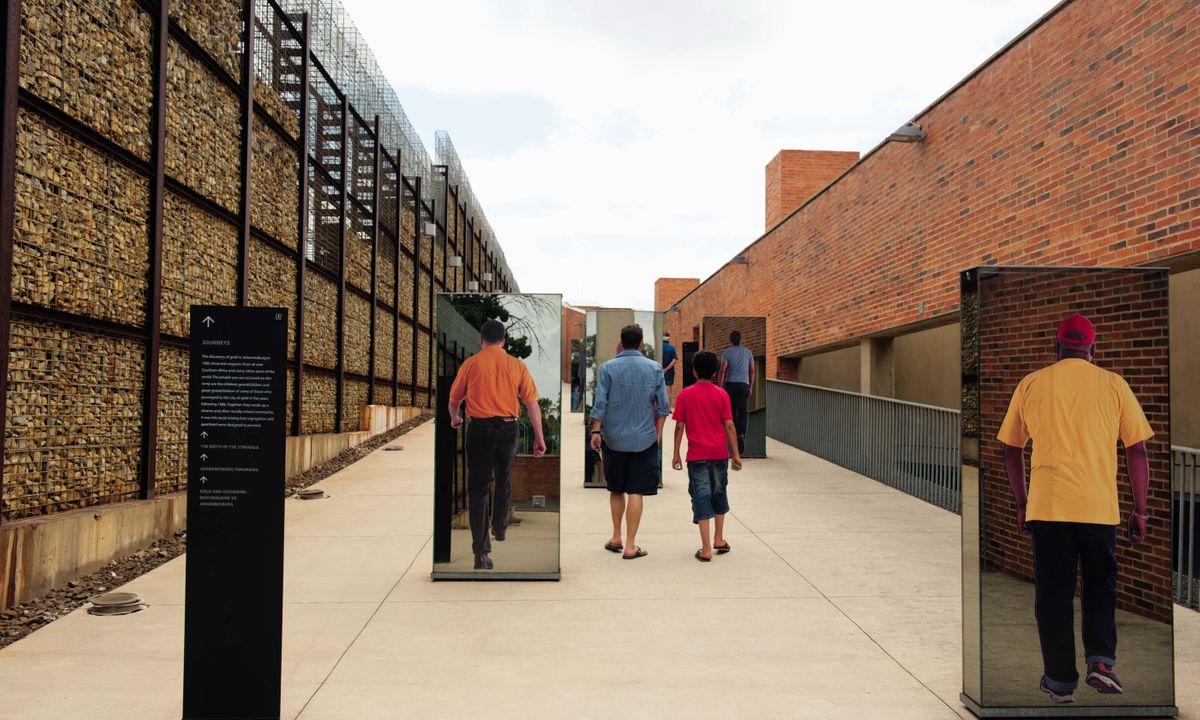
Johannesburg's Apartheid Museum (Ariadne Van Zandbergen)
Duration: 2-7 days
Good for: City life, museums, prehistorical sites, wildlife
Route: Johannesburg - Soweto - Cradle of Humankind (Maropeng) - Pilanesberg Game Reserve - Madikwe Game Reserve
When to visit: Year-round, though April to September are best for game viewing
As South Africa's smallest province, wealthy Gauteng - seSotho for 'Place of Gold' - owes its existence to the 1886 discovery of the world's richest gold seams beneath what is now central Johannesburg. Home to around 12 million people (a quarter of the national population), it's also the most important travel hub for southern Africa and a pretty fascinating urban aggregation, despite its reputation as a crime hotspot.
Contrasts abound. There's Johannesburg's rejuvenated inner-city Newtown Precinct, the sprawling former township of Soweto, the swanky neon-lit malls of commerce-driven Sandton and the sedate jacarandalined streets of Pretoria. For those with any interest in South Africa's recent past, the harrowing Apartheid Museum, south of central Johannesburg, is a truly essential stop. Stepping further back in time, the Cradle of Humankind is a UNESCO World Heritage site and its limestone caverns have yielded the planet's richest collection of hominid fossils, representing three million years of continuous human habitation.
When the city lights start to pall, Gautengis the springboard for safaris to two of Africa's finest malaria-free Big Five reserves. The Pilanesberg Game Reserve, which borders Sun City and is about two hours' drive north-west of Johannesburg, is ideal for self-drive safaris, while the larger and more remote Madikwe is reserved exclusively for a scattering of lodges offering all-inclusive packages and guided drives in open-sided vehicles.
uKhahlamba-Drakensberg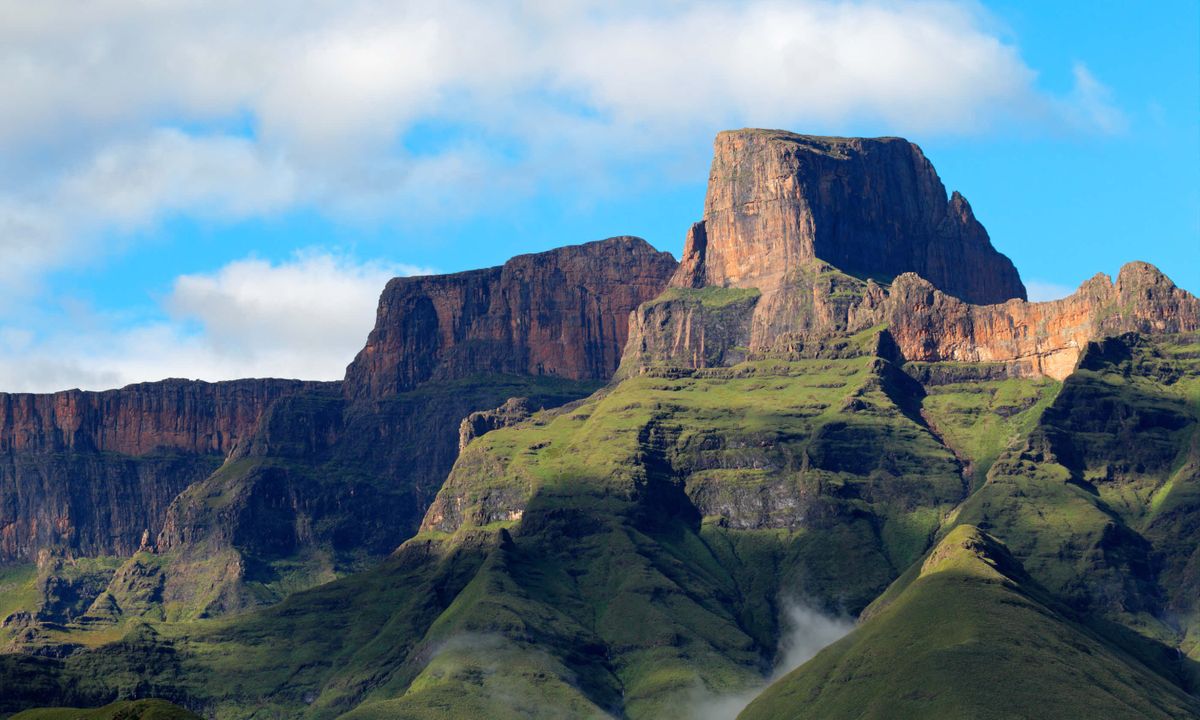
Drakensberg mountains (Dreamstime)
Best for: Hiking, scenery, prehistoric rock art, wildlife.
Route: uKhahlamba-Drakensberg Park (Royal Natal Park - Kamberg Nature Reserve - Giant's Castle Game Reserve).
When to visit: Year-round, but be prepared for violent storms between Nov and Mar, and very cold nights (possibly snow) from June to August.
As southern Africa's tallest and most extensive mountain range, the uKhahlamba- Drakensberg is one of just 35 UNESCO World Heritage Sites to be inscribed for both its natural beauty and its cultural significance. Scenically, it is magnificent: a sheer sandstone escarpment that stretches for hundreds of kilometres from north to south. It is topped all the way by aspine of 3,000m-plus peaks, the forbidding appearance of which is reflected in its isiZulu (uKhahlamba) and Afrikaans (Drakensburg) names - respectively translating as 'Barrier of Spears' and 'Dragon Mountain'.
Below its burnished cliffs, green foothills studded with salmon-hued proteas and fiery aloes offer opportunities for relaxed day walks. Its countless caves and overhangs also form an al fresco prehistoric art gallery containing some 50,000 images painted by their former hunter-gatherer inhabitants.
Although uKhahlamba-Drakensberg forms a cohesive ecological unit, its vast size and rugged topography has led to it being split into several sectors, each of which functions as a self-contained destination, requiring a stay of at least two nights.
Scenically, the pick is the northerly Royal Natal Park, set below an arcing 5km-long, 1km-high cliff known as the Amphitheatre. The more central Kamberg and Giant's Castle reserves host the most accessible of the park's major rock-art sites. In the far south, a spectacular 4WD trip up Sani Pass' the only road servicing the otherwise unbreached 200km eastern border with Lesotho-leads to an ethereal Afro-alpine plateau of tussocked grass, mossy boulders and heather.
Northern Cape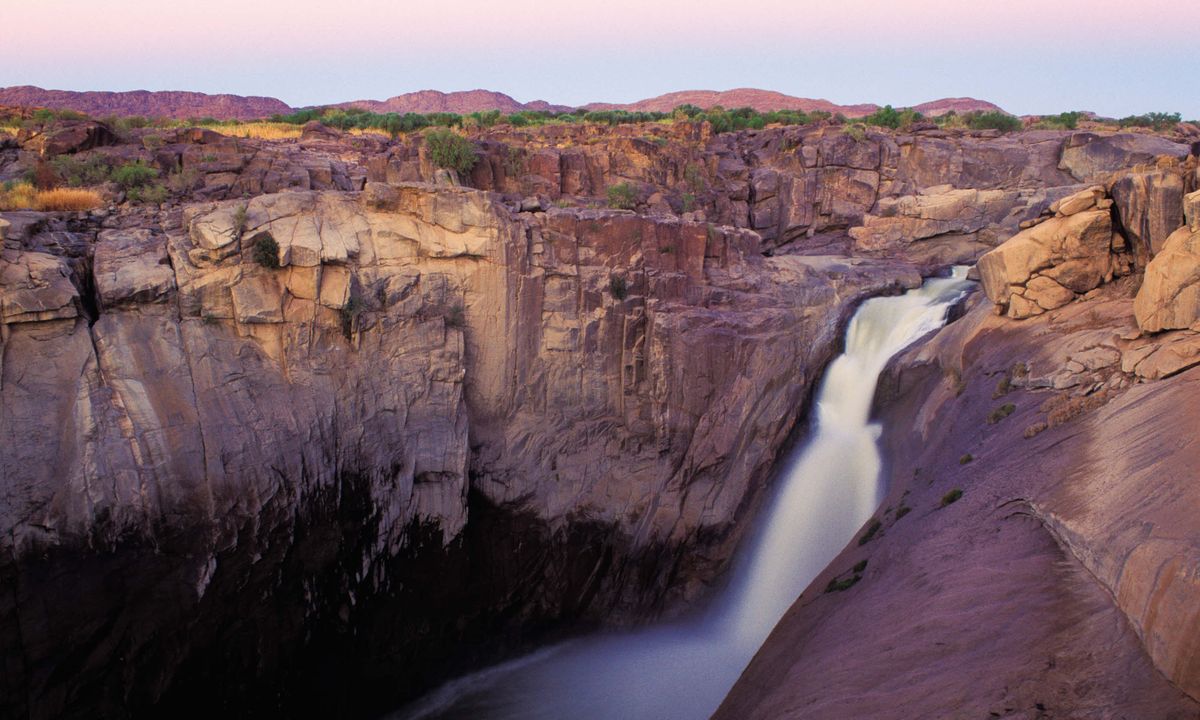
Augrabies Falls (Ariadne Van Zandbergen)
Duration: 714 days
Best for: Desert landscapes, wild flowers, waterfalls, wildlife.
Route: Johannesburg - Upington - Kgalagadi - Augrabies Falls NP - Springbok - Cape Town
When to visit: Year-round, but August to September stands out for comfortable temperatures and for the wildflower season in Namaqualand.
In direct contrast to Gauteng, the arid and little-visited Northern Cape accounts for one-third of South Africa's surface area yet supports less than 2% of the national population. It also incorporates some of the country's most alluring off -the-beaten-track attractions, making it ideal for self-drive visitors seeking to escape the crowds. Its show piece is the remote Kgalagadi Transfrontier Park, which protects a fragile, arid ecosystem of apricot-hued dunes set below a blue sky, and offers unexpectedly good game viewing; among the lions and leopards you can also spot smaller predators such as black-backed jackals and bat-eared foxes, desert-adapted herds of gemsboks, springboks andeland, as well as impossibly cute bands of suricateand ground squirrels.
Ironically, this driest part of South Africa is cut through by the country's longest river, the Orange, which offers superb rafting and kayaking. In Augrabies Falls NP, the Orange tumbles 56m into a spectacular 18km long canyon populated by a good selection of dry country wildlife. Further west, between Springbok and Vanrhynsdorp, the spring rains transform the arid, succulent- rich plains of Namaqualand into a shortlived riot of colour, comprising multi-hued fields of flowers that stretch as far as the eye can see. Heading on to Cape Town, divert to the sleepy port of Lambert's Bay, where Bird Island supports large breeding colonies of Cape gannets and African penguins, or the beautiful West Coast National Park, which offers some of the finest marine birding in the country and impressive spring flowers.
Cape Town & the Winelands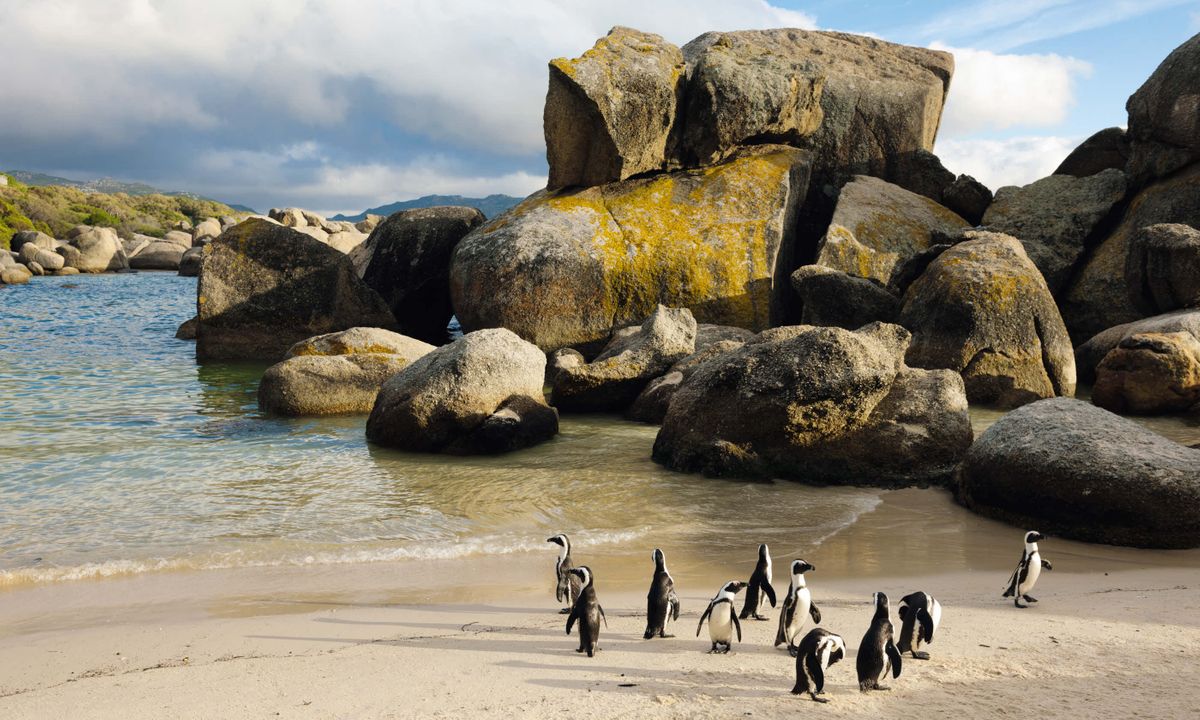
Penguins waddle on Boulders Beach (Ariadne Van Zandbergen)
Duration: 3-5 days
Good for: City life, wine-tasting, beaches, hiking and walking, birds and whalewatching.
Route: Cape Town - Table Mountain NP - Stellenbosch - Franschhoek
When to visit: Year-round. Go between February and April for the wine harvest, when the vineyards open up with festivals, good local food and plenty of grape-stomping.
Founded as a Dutch victualling station on the southern slopes of Table Mountain in 1652, Cape Town is not only the oldest city in South Africa but the most beautiful anywhere on the continent - indeed, some would say the world.
Its historic heart is dotted with Dutch architectural relics, including the original 17th-century Castle of Good Hope and The Company's Garden, while the chilling Slave Lodge Museum and heart-breaking District Six Museum provide vivid testament to the country's fractious past. The latter recalls the eponymous 'non-white' suburb in Cape Town from which 60,000 of its residents were forcibly relocated in the 1960s. Elsewhere, trendy central suburbs such as Gardens and De Waterkant rub shoulders with vibrant hubs: the traditional Cape Malay quarter of Bo-Kaap; the high-rises of raffish Green Point; the non-glitzy boutiques and refined seafood eateries of Victoria & Alfred Waterfront; as well as the anything goes backpacker haunts along Long Street.
Cape Town is also a gateway to the stunning Cape Peninsula, much of which is now protected within Table Mountain National Park. Stop by the windswept cliffs of the Cape of Good Hope (its dramatic end-of-the-continent feel belies the fact that it isn't actually the southernmost point in Africa) and make time for the time-warped naval village of Simon's Town and the colony of comical penguins that waddle Boulders Beach. However, little can match the scintillating views offered along the steep hike or giddying cable-car ride to the 1,055m summit of Table Mountain.
Inland of Cape Town, languid days can be spent exploring the hilly Cape Winelands, hopping from one wine estate to the next. Between tasting sessions, stop in stately Stellenbosch and explore its impressive wealth of thatched and gabled Cape Dutch architectural landmarks; then take a relaxed lunch at the village of Franschhoek, where its French Huguenot heritage is reflected in a tight huddle of award-winning restaurants.
Southern Cape Coast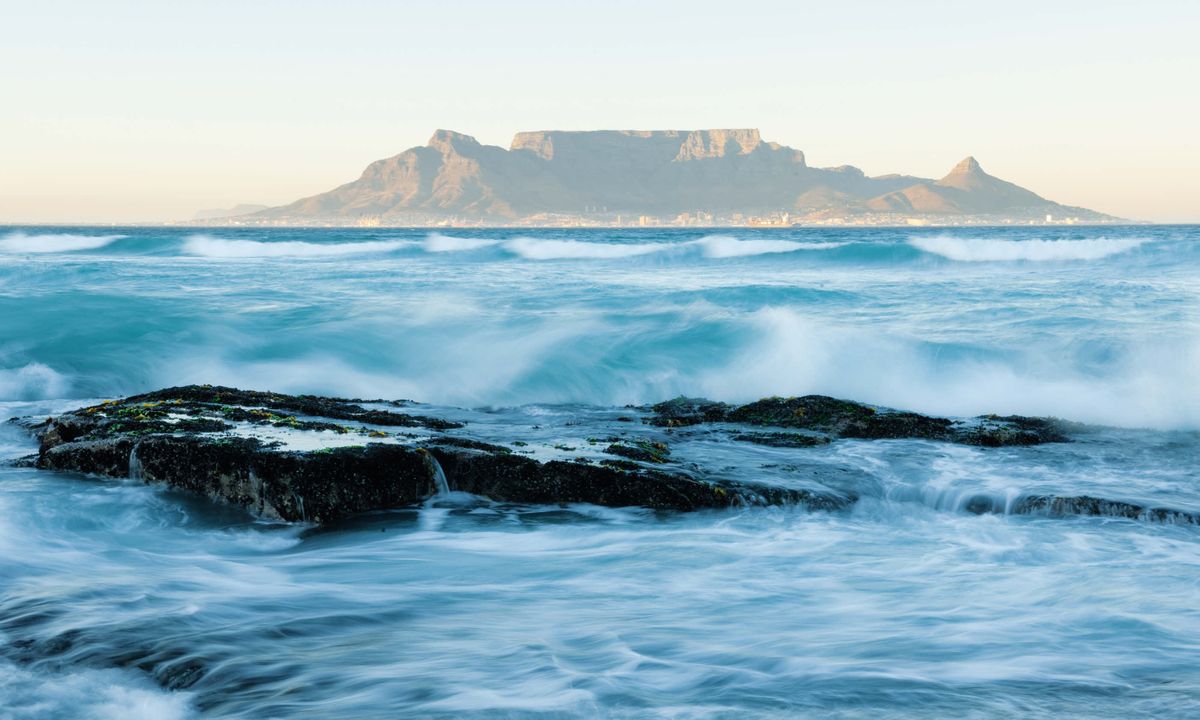
Cape Town coast (Ariadne Van Zandbergen)
Duration: 5-8 days
Good for: Beaches, day walks, birds, surfing, whale-watching, food, caving, ostrich farms
Route: Cape Town - Hermanus - George - Oudtshoorn - Wilderness - Plettenberg Bay - Storms River Mouth - Jeffreys Bay - Port Elizabeth - Addo Elephant NP
When to visit: Year-round. October to May are the driest and warmest months; whales are present June to November, with sightings peaking in September/October.
The drive from Cape Town to Port Elizabeth is punctuated with spectacular coastal scenery. The route is roughly 800km by road, depending on which variation you choose, but a good first stop is the quaint town of Hermanus. This is surrounded by cliffs that plummet into a deep bay where southern right and humpback whales regularly breach and lobtail (slap their tails against the water) during calving season.
Further east, a short diversion inland of the city of George leads to Oudtshoorn, site of the Cango Caves and their evocative limestone formations, as well as several ostrich farms founded in the late 19th century. George marks the start of the Garden Route, a stretch of coast famed for its unspoilt beaches, indigenous forests, pretty lakes and abundant birdlife. Highlights include a self-propelled kayak trip up the Keurbooms River at Wilderness, a day trail along the cliffs and dunes of the Robberg Peninsula, the idyllic beach at Plettenberg Bay and a thrillingly located suspension bridge across the Storms River Mouth.
East of the Garden Route, the Blue Flag beach at the laidback Jeffreys Bay is rated among the world's top ten surfing spots. And for a change of scene, head inland of Port Elizabeth, where Addo Elephant NP - set aside in 1921 to protect the last few survivors of the continent's most southerly wild pachyderms - supports around 500 unusually relaxed elephants, as well as leopards and reintroduced buffalo, black rhinos and lions.
Kruger National Park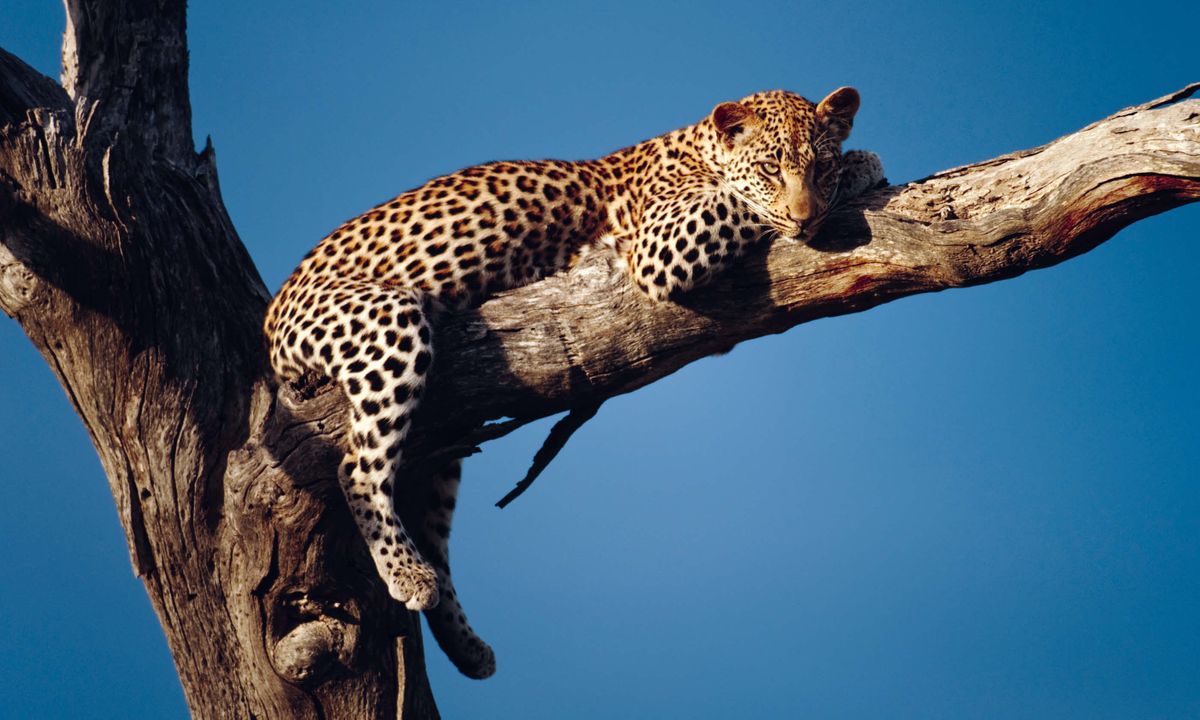
A leopard relaxes in a tree of Greater Kruger National Park (Ariadne Van Zandbergen)
Duration: 312 days
Best for: Self-drive safaris, wildlife, birds, scenery.
Route: Pretoria/Johannesburg - Kruger NP
When to visit: May to September for top game viewing, comfortable temperatures and reduced malaria risk. November to March for bird diversity and lush green scenery.
Roughly the size of Wales (UK) or New Jersey (USA), South Africa's premier game-viewing destination hosts an astonishing 147 mammal and 517 bird species. This vast swathe of low-lying bush is also the easiest and most affordable of Africa's major safari destinations to explore under your own steam, serviced as it is by a good network of sealed roads, 20-plus well-equipped rest camps and some fine interpretive material.
The most developed sector (and the closest to Gauteng) lies in the park's southern fringe at the rest camps of Skukuza and Lower Sabie, which offer access to several reliably productive game-viewing roads. Over the course of a three-day visit, you could hope to see all the so-called Big Five (lion, leopard, buffalo, rhino and elephant), along with giraffes, zebras, warthogs and several antelope species. Prolific birdlife ranges from dazzling rollers and bee-eaters to the massive kori bustard (the world's heaviest flying bird) and a wide selection of eagles and vultures.
With more time to spare, head up to central Kruger, where Satara Camp stands in a tract of open savannah known for its high lion and cheetah densities, while Olifants Camp is dramatically located on a rise overlooking the aptly-named Olifants (Elephants) River. Further north, amenities are more thinly spread and wildlife viewing can be erratic, but this is compensated by the sense of untrammelled wilderness associated with low-key camps such as Punda Maria and Shingwedzi.
Northern KwaZulu-Natal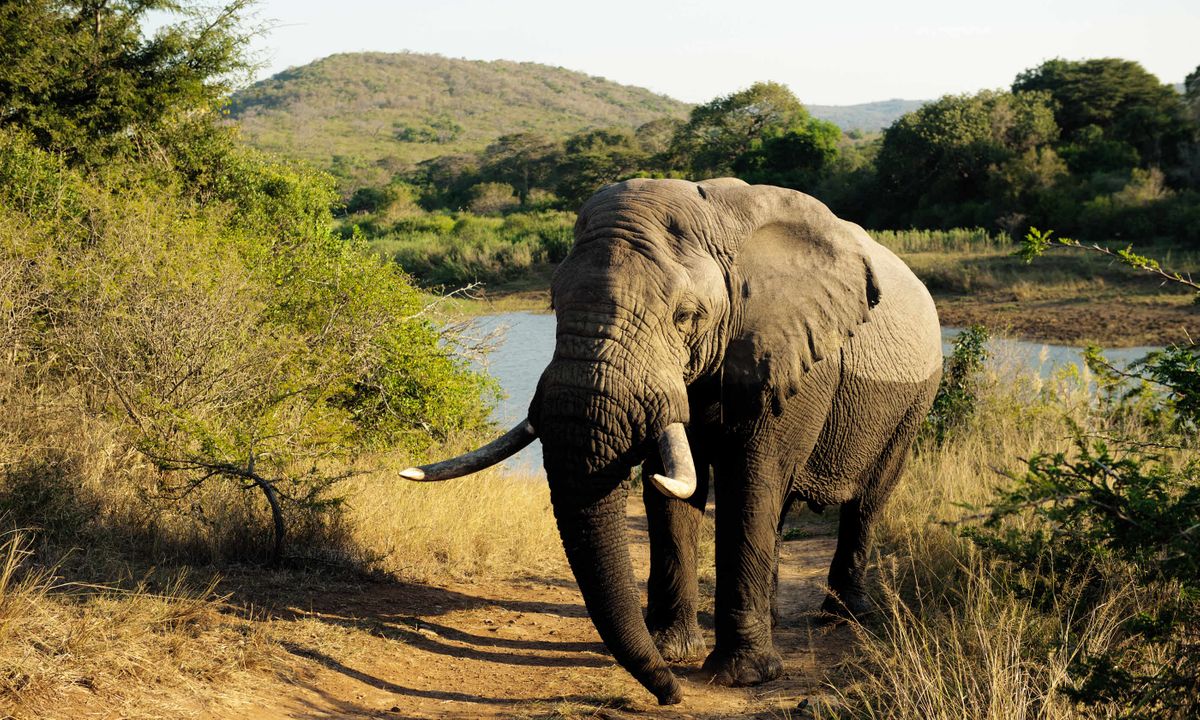
An African elephant lumbers up from the Hluhluwe River (Ariadne Van Zandbergen)
Duration: 37 days
Good for: wildlife, beaches, diving, snorkelling, birdlife, cultural tours, wilderness trails
Route: Kruger NP - Mkhuze Game Reserve - St Lucia - Umlalazi Reserve - Eshowe - Durban
When to visit: May to September for comfortable weather and game viewing; June to October for whales. The peak time for birdwatching and turtle activity is between November and March.
The ecologically diverse coastal belt of Northern KwaZulu-Natal competes with Kruger NP as South Africa's most rewarding game-viewing area, and it can easily be explored on a trip from the port city of Durban. The regional centrepiece is iSimangalisoWetland Park, a UNESCO World Heritage Site that incorporates over 200km of unspoilt tropical coastline, five separate protected wetlands, as well as the world's tallest forested dunes at Cape Vidal. At its southernmost point also lie coral reefs at Sodwana Bay, with an unrivalled array of wildlife on- and off shore.
The options are plenty, with a range of activities including everything from snorkelling, nocturnal turtle-nesting walks and whale- and dolphin-watching cruises to boat trips on the St Lucia Estuary in search of hippos and Big Five game-viewing in Mkhuze. Superb birdwatching can also be found pretty much everywhere.
Several smaller game reserves are dotted around northern KwaZulu-Natal. The pick is Hluhluwe-Imfolozi Park, created in 1895 to protect dwindling populations of black and white rhino, and now home to the world's densest free-ranging populations of both. Further south, Umlalazi Nature Reserve can be explored on a mangrove walkway that offers a rare opportunity to glimpse species unique to this intertidal habitat, such as mangrove kingfishers and mudskippers.
Eshowe is home to a thrilling aerial boardwalk offering views into the canopy of a mist-belt forest, while Shakaland - athemed hotel built on the original kraal (village) of King Shaka (1816-28) of the Zulu - offers an engaging cultural programme, with traditional Zulu healers and drumming and dancing shows.
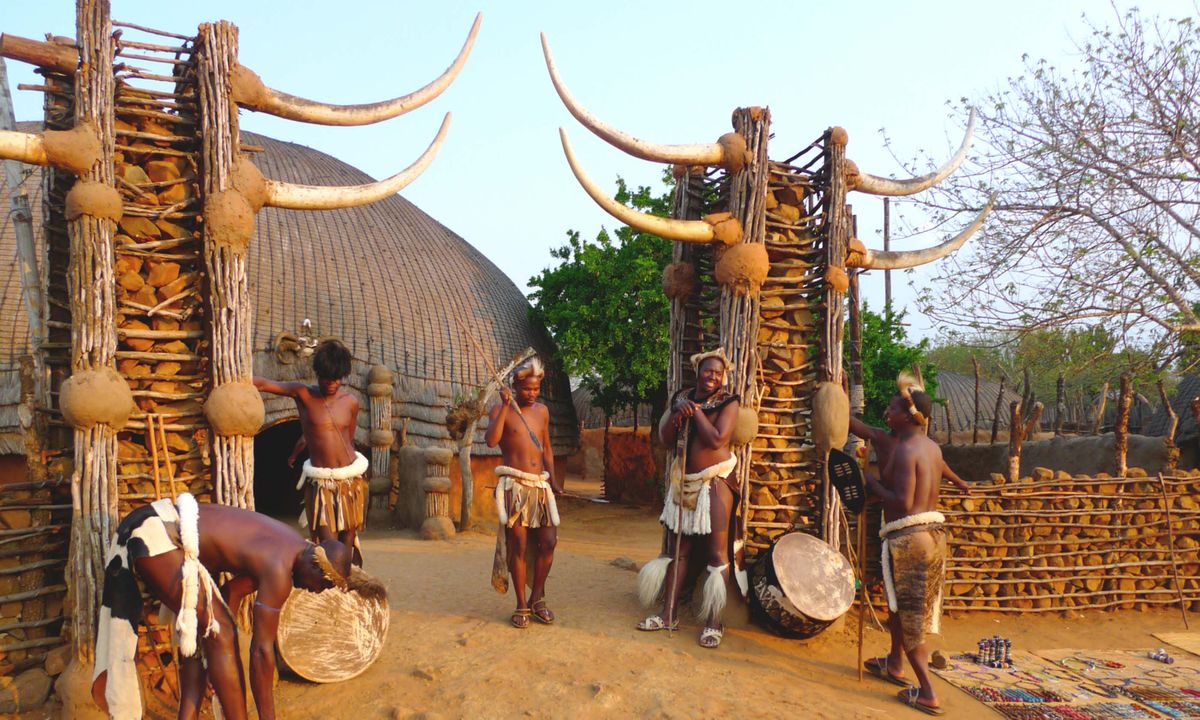
Zulu warriors, Shakaland, South Africa (Dreamstime)
Top tips1: Gauteng's reputation for crime is largely justified. Johannesburg's city centre and Soweto township should only be visited on a guided tour (any hotel can arrange this). Use taxis at night.
2: The Northern Cape is best explored over a couple of weeks' drive along the N14 and N7 roads, between Johannesburg and Cape Town. Allocate at least four nights to visit Kgalagadi Transfrontier Park.
3: Adrenaline junkies take note: one of the world's highest commercial bungee jumps plummets 216m from the Bloukrans Bridge between Plettenberg Bay and Storms River.
4: Don't fancy self-driving? Try one of the exclusive lodges in Sabi Sand, a private reserve that shares an open border with Kruger; its all-inclusive guided packages are known for close-up big-cat sightings.
Source: The ultimate guide to South Africa, from hidden corners to Cape Town
No comments:
Post a Comment